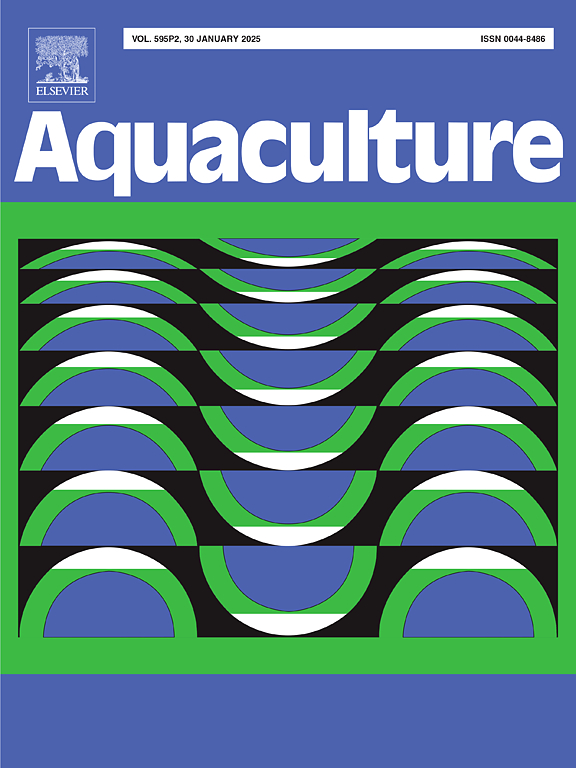Medicinal plant-product encapsulated with herb-hydrogel for ammonia removal and stress alleviation in semi-biofloc system containing aquaponics water cultured with Pangasianodon hypophthalmus
IF 3.9
1区 农林科学
Q1 FISHERIES
引用次数: 0
Abstract
The study investigates the use of microencapsulated product of Indian gooseberry (Phyllanthus emblica) developed using hydrogel derived from isabgol (Plantago ovata) for ammonia removal in aquaponics water and the growth performance of Pangasianodon hypophthalmus for a 45-day period. The study consists of a control (C) and two treatments: T1 (isabgol) and T2 (isabgol+Indian gooseberry). Ammonia was spiked weekly at varying concentrations. T2 showed significantly highest (p < 0.05) ammonia removal in all the different spiking dosages, followed by T1. Ammonia was eliminated more rapidly in the 4th week. T2 removed 83.24 ± 0.37 % of ammonia in 36 h and 95.27 ± 0.59 % in 48 h. The decline in pH levels brought on by the nitrification process is connected with less ammonia removal in the 5th week. The fish growth indices (final total biomass, net weight gain, specific growth rate) and feed conversion ratio were significantly (p < 0.05) improved in treatment groups, with T2 exhibiting superior performance. The hematological and serum biochemical analyses indicated reduced stress in treatment groups compared to the control. The characterization of isabgol and gooseberry also revealed their potential as bioactive carriers. LC-MS analysis confirmed the presence of oxy-chromen-4-one, 4-indolecarbaldehyde, kaempferol, and apigenin in isabgol. Phenolic acid, flavonoids, essential amino acids, and vitamins were found in Indian gooseberry. The study revealed that the developed product has the potential to decontaminate high ammonia levels, mitigate stress, and improve the growth performance of P hypophthalmus, which can be attributed to the controlled release and immunostimulating effect of microencapsulated Indian gooseberry product coupled with semi-biofloc formation facilitated by hydrogel derived from isabgol.
求助全文
约1分钟内获得全文
求助全文
来源期刊

Aquaculture
农林科学-海洋与淡水生物学
CiteScore
8.60
自引率
17.80%
发文量
1246
审稿时长
56 days
期刊介绍:
Aquaculture is an international journal for the exploration, improvement and management of all freshwater and marine food resources. It publishes novel and innovative research of world-wide interest on farming of aquatic organisms, which includes finfish, mollusks, crustaceans and aquatic plants for human consumption. Research on ornamentals is not a focus of the Journal. Aquaculture only publishes papers with a clear relevance to improving aquaculture practices or a potential application.
 求助内容:
求助内容: 应助结果提醒方式:
应助结果提醒方式:


